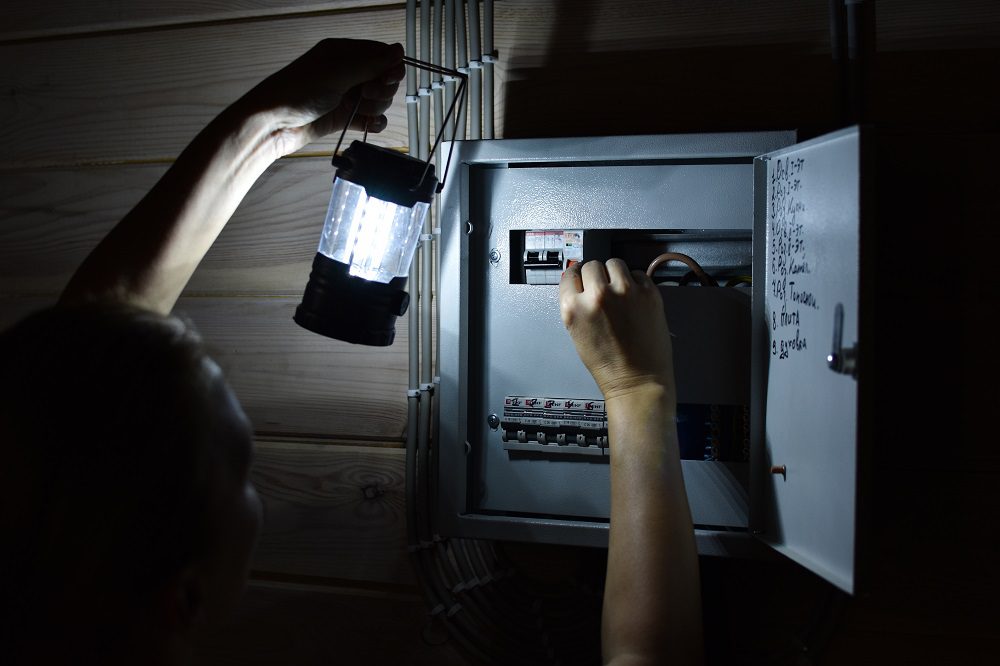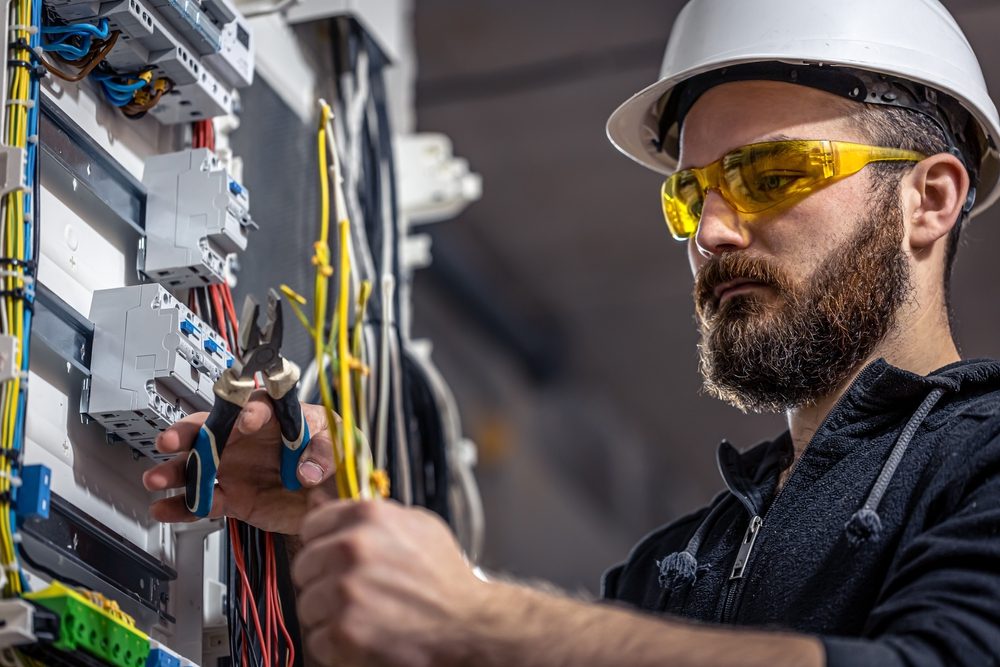
What To Do When an Outlet Stops Working in Your Charlotte Home
An outlet that quits on a busy morning can throw off the whole day. Coffee maker won’t start. Phone won’t charge. Lamps stay dark in the living room. The cause might be simple, or electrical repair Charlotte it might point to a larger wiring issue. This guide walks through safe, practical steps Charlotte homeowners can take, how to spot warning signs, and when to call for electrical repair Charlotte NC from a licensed pro like Ewing Electric Co.
Start with safety
Electricity does not forgive guesswork. If an outlet looks scorched, smells like smoke, or feels hot, stop using it and switch the breaker off. Do the same if you hear buzzing at the receptacle or see sparking when a plug goes in. Heat, smell, and noise suggest a loose connection or overload that can lead to an electrical fire. Homeowners in neighborhoods with older housing stock, such as Plaza Midwood or Dilworth, see these symptoms more often because of aged wiring and tired receptacles.

Quick checks that solve half of cases
Half of dead outlets our team sees in Charlotte turn out to be simple problems. A tripped GFCI, a breaker that looks on but isn’t, or a faulty device plugged into the outlet are common culprits.
- Press the GFCI reset button. Kitchens, bathrooms, garages, exterior outlets, and basements often protect downstream outlets through one GFCI. Check nearby outlets for the “Test/Reset” buttons and press Reset until it clicks. Then test the dead outlet.
- Test the outlet with a different device. Plug in a lamp or phone charger you know works. Sometimes the “dead outlet” is actually a dead appliance or a bad power adapter.
- Check the breaker panel. Open the electrical panel and look for a breaker that sits between on and off. Firmly switch it all the way off, then back on. In some Charlotte homes, labeling is wrong or faded; scan all breakers, not just the one marked for that room.
- Look for a tripped AFCI. Newer homes in Ballantyne, Berewick, and Highland Creek often use arc-fault breakers. They have a small test button. Reset these like standard breakers.
- Inspect switched outlets. Many living rooms in Myers Park and SouthPark have a half-hot receptacle controlled by a wall switch. Flip any nearby switches and test again.
If one of those steps brings the outlet back, keep an eye on it for a day. If it trips again, there may be an overload or a loose neutral that needs attention.
Why outlets stop working in Charlotte homes
Building age, humidity, and renovations all play a role. Here are patterns seen across the city.
Humidity and exterior exposure. Garages in University City and crawlspace areas in older homes see GFCIs trip after rainy spells. Moisture inside weather-resistant covers can cause nuisance trips. Upgrading to in-use bubble covers and fresh gaskets often fixes this.
Backstabbed connections. Many tract homes from the 1990s to early 2000s used push-in “backstab” connections on receptacles. Over time, heat cycles loosen those spring clips. Symptoms include intermittent power, warm faceplates, or devices flickering with slight movement of the plug. Re-terminating wires on the screw lugs solves it.
Daisy-chained loads. One GFCI protecting a string of outlets runs through a kitchen, dining area, and patio. Add holiday lights and a space heater, and the upstream GFCI trips. Rebalancing loads or adding a dedicated circuit can prevent repeated shutdowns.
Worn contacts. Outlets that no longer grip plugs tightly create resistance and heat. If a plug sags or falls out, the receptacle is due for replacement.
Aging aluminum branch circuits. Some homes built in the late 1960s and early 1970s around Charlotte have aluminum wiring on 15–20 amp circuits. This wiring needs proper AL-rated devices or approved connectors. Loose joints can cause dead outlets and overheating. This is not a DIY situation.
Rodent damage. In crawlspace-heavy neighborhoods, mice can chew insulation on NM cable feeding first-floor outlets. A bite through a neutral can kill an outlet while lights still work on the same circuit.
Step-by-step: a safe homeowner workflow
If the outlet shows no signs of heat or damage, and you are comfortable checking basics, follow this short workflow before calling.
- Reset nearby GFCIs and any AFCI breakers. Retest the outlet with a known-good lamp.
- Unplug everything on that circuit. Space heaters, window ACs, and microwaves often overload small circuits. Try the outlet with just one light.
- Inspect the faceplate and surrounding wall. Look for cracks, paint inside the slots, or signs of water near a backsplash. If you find water, stop and call.
- Map the circuit. Check which other outlets and lights are dead. This helps locate the upstream device that may be failing.
- Document breaker behavior. If the breaker trips again immediately on reset, leave it off and request service.
This approach narrows the cause and keeps risk low.
GFCI and AFCI basics for Charlotte codes
Mecklenburg County inspections follow current NEC requirements. Kitchens, bathrooms, laundry areas, garages, exteriors, and basements require GFCI protection. Bedrooms and many living areas require AFCI protection in newer homes. A dead outlet in these areas often ties back to a protective device doing its job. If nuisance trips occur weekly, it points to either a device nearing end-of-life (GFCIs often last 7–10 years) or wiring that needs correction. Upgrading to dual-function breakers in the panel can tidy protections and reduce random trips if your panel supports them.
When resetting does not fix it
Repeated trips, partial power, or heat at the outlet suggest a wiring fault. Common next steps a licensed electrician will take include:
Voltage testing. A pro will verify hot-to-neutral, hot-to-ground, and neutral-to-ground readings. A missing neutral shows up quickly on a meter.
Open-joint location. Electricians check the last working outlet upstream and the first dead outlet downstream. The fault often lives at one of these two boxes.
Re-termination. Moving backstabbed conductors to screw terminals, tightening grounds, and pigtailing neutrals improves reliability.
Device replacement. Worn GFCIs and receptacles get swapped for new, properly rated devices. AFCI nuisance tripping sometimes clears after replacing a weak breaker.
Circuit capacity review. If the outlet keeps dying because the circuit is overburdened, the best fix is a new dedicated line for space heaters, treadmills, or garage fridges.
What repairs cost in Charlotte
Prices vary with access, panel brand, and permit needs, but typical ranges:
- Replace a standard receptacle: $95–$185 per outlet when accessible.
- Replace a GFCI: $150–$250 depending on location and box condition.
- Diagnose and repair an open neutral or loose connection: $185–$450.
- Add a dedicated 20-amp kitchen circuit: $450–$1,200 based on run length and finishes.
- Panel-mounted AFCI or dual-function breaker replacement: $175–$350 per breaker, brand-dependent.
Older homes with plaster walls or aluminum wiring can sit higher due to extra time and materials. Ewing Electric Co provides upfront pricing after on-site diagnosis, so there are no surprises.

Special cases by area
South End condos. Shared walls and tight panels often mean combination AFCI/GFCI breakers. A single breaker can silence several outlets at once. Labeling is critical, and panel space is at a premium.
Lake Wylie and Mountain Island Lake properties. Exterior and dock circuits see heavy GFCI activity due to moisture. Weather-resistant devices and proper in-use covers pay off.

Historic homes. Knob-and-tube or mixed wiring in Elizabeth or Wesley Heights needs careful evaluation. Sometimes the best fix is a partial rewire rather than chasing the same dead outlet every few months.
Newer suburbs. In Steele Creek and Ballantyne, most failures come from backstabbed receptacles and overloaded kitchen circuits after appliance upgrades.
DIY boundaries: what’s reasonable and what to leave to pros
Swapping a faceplate or pressing a GFCI reset is safe. Beyond that, risk climbs. Turning off a breaker and removing an outlet to “take a peek” still exposes live feed-through conductors in some boxes. Without a non-contact tester, a two-lead meter, and training, a homeowner can mistake a shared neutral or multi-wire branch circuit and get shocked. If anything looks burned, if aluminum wiring appears, or if breakers trip immediately on reset, call for electrical repair Charlotte NC.
How Ewing Electric Co diagnoses faster
Technicians carry outlet testers, true-RMS meters, tracing tools, and a load bank. That speeds up the hunt for an open neutral or a bad splice hidden behind a backsplash. The team documents which devices share protection, tests GFCI and AFCI trip times, and confirms grounding. On many calls, the fix is at the upstream device, not the dead outlet the homeowner flagged. Tight process saves time and protects finished walls.
A brief example: A homeowner in NoDa reported two dead island outlets. The GFCI at the breakfast nook looked fine. Our tech traced load wiring and found a loose neutral at a backstabbed dining room receptacle feeding the island. Re-terminated to screw lugs, retested, and the island was back in service in under an hour.
Reduce the chance of the next dead outlet
Small upgrades make daily life smoother:
Use screw terminals, not backstabs. When replacing outlets, land conductors on the side screws and torque to spec.
Choose spec-grade receptacles. They grip better and last longer, which matters for vacuum cleaners and power tools that stress connections.
Add dedicated circuits for heavy loads. Space heaters, microwaves, garage fridges, and treadmills deserve their own lines.
Keep moisture out. Install in-use covers outdoors and replace worn gaskets. In bathrooms, verify the fan moves enough air to keep humidity lower.
Label the panel accurately. Clear labels cut diagnosis time during an outage and help during emergencies.
Ready for help? Local, fast, and code-correct
If a simple reset did not solve the issue, or if you see heat, buzzing, or repeated trips, schedule service. Ewing Electric Co handles same-day electrical repair Charlotte NC across South End, Plaza Midwood, Dilworth, Ballantyne, Steele Creek, NoDa, and nearby suburbs. The team arrives with the parts most outlets need, fixes the cause, and documents the work so the next homeowner is not guessing.
Call Ewing Electric Co or request a visit online for outlet repair, GFCI and AFCI troubleshooting, and panel work. A quick, safe repair beats another morning with a cold coffee maker.
Ewing Electric Co provides dependable residential and commercial electrical services in Charlotte, NC. Family-owned for over 35 years, we handle electrical panel upgrades, EV charger installation, generator installation, whole-home rewiring, and 24/7 emergency repairs. Our licensed electricians deliver code-compliant, energy-efficient solutions with honest pricing and careful workmanship. From quick home fixes to full commercial installations, we’re known for reliable service done right the first time. Proudly serving Charlotte, Matthews, Mint Hill, and nearby communities. Ewing Electric Co
7316 Wallace Rd STE D Phone: (704) 804-3320 Website:
https://ewingelectricco.com/ |
Google Site
Social:
Facebook |
Instagram |
Twitter
Map: View on Google Maps
Charlotte,
NC
28212,
USA